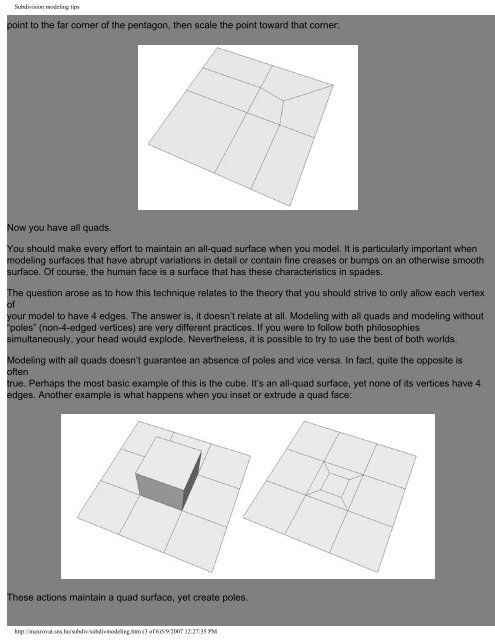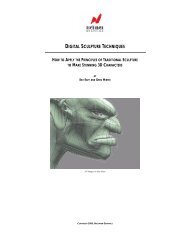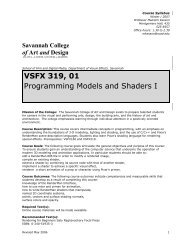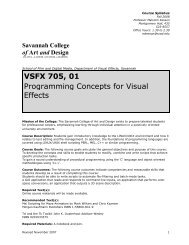Subdivision modeling tips
Subdivision modeling tips
Subdivision modeling tips
Create successful ePaper yourself
Turn your PDF publications into a flip-book with our unique Google optimized e-Paper software.
<strong>Subdivision</strong> <strong>modeling</strong> <strong>tips</strong>point to the far corner of the pentagon, then scale the point toward that corner:Now you have all quads.You should make every effort to maintain an all-quad surface when you model. It is particularly important when<strong>modeling</strong> surfaces that have abrupt variations in detail or contain fine creases or bumps on an otherwise smoothsurface. Of course, the human face is a surface that has these characteristics in spades.The question arose as to how this technique relates to the theory that you should strive to only allow each vertexofyour model to have 4 edges. The answer is, it doesn’t relate at all. Modeling with all quads and <strong>modeling</strong> without“poles” (non-4-edged vertices) are very different practices. If you were to follow both philosophiessimultaneously, your head would explode. Nevertheless, it is possible to try to use the best of both worlds.Modeling with all quads doesn’t guarantee an absence of poles and vice versa. In fact, quite the opposite isoftentrue. Perhaps the most basic example of this is the cube. It’s an all-quad surface, yet none of its vertices have 4edges. Another example is what happens when you inset or extrude a quad face:These actions maintain a quad surface, yet create poles.http://maxrovat.sns.hu/subdiv/subdiv<strong>modeling</strong>.htm (3 of 6)5/9/2007 12:27:35 PM







